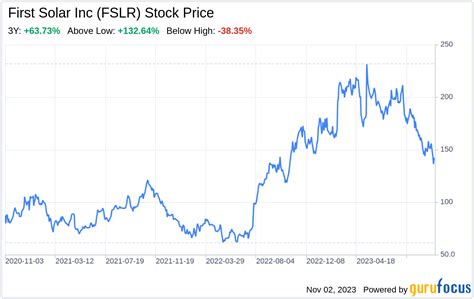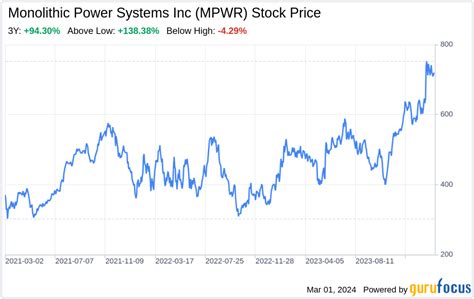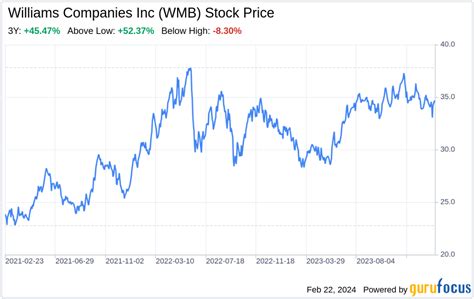Home Depot has established itself as a dominant force in the retail sector, making its stock a significant point of interest for investors. As a leading home improvement retailer, Home Depot’s stock performance is closely tied to various market trends, economic factors, and the company’s strategic initiatives. Recent shifts in the market have highlighted the volatility of Home Depot’s stock, prompting investors to pay closer attention to its financial performance and future prospects. With a strong dividend strategy and ambitious expansion plans, Home Depot continues to attract long-term investors. This article delves into the key trends, market performance, and future investment prospects of Home Depot stock, offering a comprehensive analysis for potential and current investors.
Let’s investigate this topic extensively with nozaviral.com
1. Why Home Depot Stock is a Key Player in the Retail Sector
Home Depot has firmly positioned itself as a key player in the retail sector, particularly in the home improvement and construction markets. As the largest home improvement retailer in the United States, Home Depot benefits from a vast network of stores, a strong brand reputation, and a loyal customer base. The company’s ability to cater to both individual consumers and professional contractors provides it with a diverse revenue stream, making its stock a reliable performer in the retail sector.
Moreover, Home Depot’s strategic focus on innovation, customer service, and digital transformation has further solidified its market leadership. The company has successfully integrated e-commerce with its physical stores, allowing customers to seamlessly shop online and in-store, a key advantage in today’s retail landscape. Home Depot’s commitment to maintaining competitive pricing, combined with its extensive product range, ensures that it remains a go-to destination for home improvement needs.
These factors collectively contribute to Home Depot’s strong financial performance and market position, making its stock an attractive option for investors looking to capitalize on the stability and growth potential within the retail sector.

2. How Recent Market Trends Have Impacted Home Depot Stock
Home Depot’s stock performance has been significantly impacted by recent market trends, highlighting both the challenges and opportunities within the retail sector. The surge in e-commerce and evolving consumer behavior, especially during and after the COVID-19 pandemic, have compelled Home Depot to adapt swiftly. The company’s strategic investment in its online platform and curbside pickup options has enabled it to capture a larger market share, leading to significant stock growth during periods of heightened demand for home improvement products.
Recent concerns about inflation, interest rates, and supply chain disruptions have injected volatility into Home Depot’s stock performance. Higher costs for materials and labor have pressured profit margins, causing investors to approach the stock with caution. Despite these headwinds, Home Depot’s robust brand, loyal customer base, and strategic initiatives aimed at mitigating risks have allowed the company to remain strong in the market. As a result, the stock continues to attract investors seeking resilience in the face of economic uncertainty.

3. What Influences the Volatility of Home Depot Stock Prices
Home Depot’s stock price volatility is driven by a confluence of factors, encompassing both internal company operations and external economic forces. A major factor is the company’s dependence on the housing market, which directly affects the demand for home improvement goods. Shifts in housing sales, new construction, and renovation projects can cause substantial fluctuations in Home Depot’s stock price, as investors respond to changes in consumer spending patterns.
Economic indicators, like interest rates and inflation, exert a significant influence on market dynamics. Rising interest rates can curb housing market activity, while inflationary pressures can escalate the costs of goods sold, potentially eroding profit margins. These economic fluctuations often breed uncertainty among investors, contributing to volatility in stock prices.
Supply chain disruptions have gained significant prominence in recent years. Challenges in obtaining raw materials, combined with elevated shipping costs, can result in product shortages and price hikes. These factors can negatively affect Home Depot’s financial performance and the stability of its stock price.
Investor sentiment and broader market trends, such as the growing popularity of online shopping, play a significant role in Home Depot’s stock volatility. Positive developments in these areas can fuel investor confidence and drive stock prices higher, while negative news can trigger sharp declines. The stock’s price is ultimately influenced by a complex interplay of industry-specific and macroeconomic factors, leading to periods of substantial volatility.

4. Why Investors Are Focusing on Home Depot’s Financial Performance
Home Depot’s strong financial performance is under close scrutiny by investors, who are impressed by the company’s history of success and its knack for navigating challenging market situations. Home Depot has consistently increased revenue, thanks to its diverse product offerings and strategic investments in technology, making it a leader in the retail industry. The company’s ability to remain profitable even during economic slumps highlights its resilience and skilled management.
Investors are particularly interested in Home Depot’s strong cash flow generation. This robust cash flow fuels its dividend payments and share buyback programs, making the stock attractive to both income-oriented investors and those seeking stability in a fluctuating market. Furthermore, Home Depot’s commitment to cost control and operational efficiency has enabled it to maintain healthy profit margins, even in the face of rising expenses and supply chain disruptions.
Investors are closely watching Home Depot’s financial health as a key indicator of its future growth potential. The company’s ability to balance reinvesting profits in expansion and innovation with a strong balance sheet provides reassurance to investors about its long-term prospects. Consequently, Home Depot’s financial performance continues to be a crucial element in its appeal to investors of all stripes, from conservative to growth-oriented.
5. How Home Depot’s Dividend Strategy Affects Long-term Investors
Home Depot’s dividend strategy is a key factor in attracting and retaining long-term investors. The company has a strong track record of paying regular, and often growing, dividends, making it an attractive option for income-oriented investors. This consistent dividend policy reflects Home Depot’s robust cash flow generation and its dedication to returning value to its shareholders.
In a low-interest-rate environment, the dividend yield offers long-term investors a stable source of income. Home Depot’s consistent dividend increases further solidify its attractiveness, showcasing confidence in its financial performance and future growth. This strategy not only rewards existing shareholders but also fuels stock price appreciation, as investors anticipate future dividend growth.
Home Depot’s dividend strategy is bolstered by a strong balance sheet and prudent financial management. The company’s capacity to maintain and increase its dividend payments without sacrificing its ability to invest in growth initiatives or navigate economic challenges instills investor confidence in the long-term sustainability of their investment.
Home Depot’s dividend strategy effectively appeals to long-term investors. By offering a consistent income stream, it strengthens shareholder value and underscores the company’s financial health and stability. These factors, in turn, cultivate sustained investor confidence and loyalty.
6. What Analysts Are Predicting for Home Depot’s Future Growth
Analysts are optimistic about Home Depot’s future growth, fueled by its strong market position and strategic initiatives. The company’s dominance in the home improvement sector and its successful integration of e-commerce with traditional retail are expected to continue driving revenue growth. A key driver of future sales is Home Depot’s ongoing commitment to enhancing the customer experience, both online and in-store.
Analysts point to Home Depot’s expansion plans, especially in thriving markets and their focus on supply chain optimization, as key drivers of sustained growth. The company’s adaptability to evolving consumer preferences and commitment to technological advancements are anticipated to strengthen its competitive position further.
While there are some potential challenges to consider, analysts note that macroeconomic factors like interest rates, inflation, and housing market fluctuations could influence consumer spending, potentially impacting Home Depot’s growth trajectory. Despite these risks, the overall sentiment remains optimistic. Many analysts believe that Home Depot will continue to experience steady growth in the coming years, bolstered by its strong financial position, strategic focus, and adaptability to changing market conditions. This positive outlook makes the stock attractive to both conservative and growth-focused investors.
7. Why Economic Factors Play a Crucial Role in Home Depot’s Stock Value
Home Depot’s stock value is heavily influenced by economic factors, which directly impact the company’s performance and the overall market conditions. A key factor is the health of the housing market. As a leading home improvement retailer, Home Depot’s sales are closely linked to housing activity, such as new construction and renovations. Fluctuations in the economy, particularly within the housing sector, can significantly affect consumer spending on home improvement products, thus influencing Home Depot’s revenue and ultimately its stock value.
Interest rates play a crucial role in the economy, significantly influencing the housing market. When interest rates rise, it becomes more expensive for individuals to obtain a mortgage, impacting affordability and slowing down housing market growth. This decreased demand for homes can ultimately lead to lower demand for Home Depot’s products. However, when interest rates fall, it becomes more affordable to borrow money, stimulating housing activity and boosting sales. This increased demand for homes translates into higher demand for Home Depot’s products, potentially leading to improved stock performance.
Inflation has a direct impact on Home Depot’s stock value by influencing its costs and pricing strategies. Rising inflation can result in increased costs for materials and disruptions in the supply chain, putting pressure on profit margins. Although Home Depot frequently passes these increased costs onto consumers, prolonged inflation can ultimately affect overall consumer spending power.
Economic factors can significantly impact Home Depot’s stock value, leading to volatility. Therefore, investors must closely monitor economic conditions to understand their potential influence on the company’s financial performance and the stability of its stock price.
8. How Home Depot’s Expansion Plans Could Impact Stock Performance
Home Depot’s expansion plans are poised to significantly impact its stock performance. By driving growth and enhancing market presence, the company aims to capture new customer segments and increase market share. This strategic focus on expanding its store footprint, both domestically and internationally, includes opening new locations in underserved areas. These efforts can boost revenue streams and provide greater geographic reach.
Furthermore, Home Depot’s commitment to bolstering its supply chain and logistics infrastructure underpins its expansion strategy. This investment guarantees efficient product delivery and inventory management, thereby facilitating the launch of new stores and enhancing the overall resilience of its supply chain.
Home Depot’s growth is further fueled by expanding into new markets and developing sophisticated online platforms. This strategy taps into emerging consumer trends and widens sales channels, which investors perceive as a positive sign for future revenue growth and market dominance. Successful execution of these plans can boost investor confidence, potentially leading to a higher stock price, reflecting optimism about the company’s long-term prospects.
9. **What Risks and Opportunities Should Investors Consider for Home Depot Sto
When evaluating Home Depot stock, investors should carefully consider both the potential risks and the potential rewards of their investment.
Opportunities: Home Depot’s dominant market standing, comprehensive product offerings, and successful e-commerce integration present substantial growth prospects. The company’s ongoing expansion initiatives, encompassing new store openings and technological innovations, are strategically positioned to penetrate new market segments and foster revenue expansion. Furthermore, Home Depot’s robust dividend policy delivers a stable income stream for long-term investors, augmenting its appeal.
Risks:
Despite the promising opportunities, Home Depot faces several significant risks. Economic volatility, including fluctuations in interest rates and inflation, can negatively affect consumer spending and the housing market, impacting the company’s performance. Disruptions in the supply chain and rising costs of goods can erode profit margins, potentially impacting stock performance. Furthermore, growing competition from both traditional retailers and e-commerce platforms could put pressure on Home Depot’s market share and profitability.
Investors must carefully weigh the risks and opportunities associated with Home Depot. The company’s solid fundamentals and strategic plans offer exciting growth potential. However, continuous assessment of economic conditions and market trends is vital for making well-informed investment choices and effectively managing potential risks.
In conclusion, Home Depot’s stock remains a significant player in the retail sector, driven by its strong market position, strategic expansion plans, and robust financial performance. While recent market trends and economic factors introduce volatility, the company’s adaptability and growth prospects present promising opportunities for investors. By maintaining a keen focus on both the potential risks and benefits, investors can better navigate the complexities of Home Depot’s stock. Overall, Home Depot’s continued innovation and commitment to enhancing shareholder value make it a compelling choice for those seeking stability and growth in their investment portfolios.
nozaviral.com

